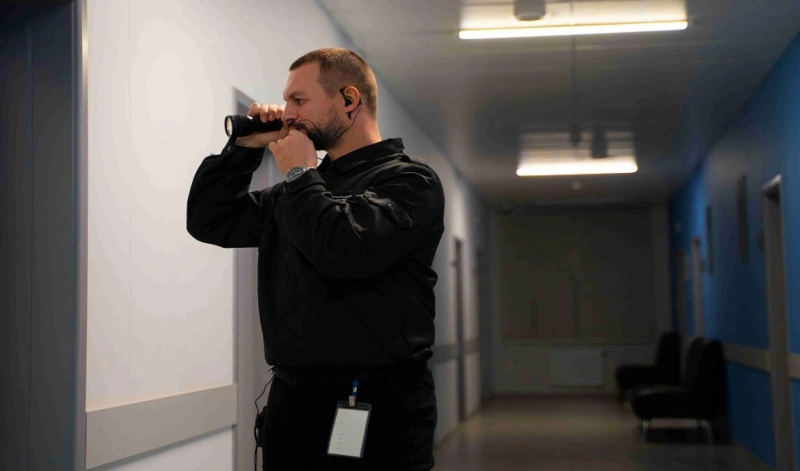Continuous improvement is essential for evolving your security risk management strategy to adapt to emerging threats, technological advancements, and changing business requirements. In today\'s dynamic and evolving threat landscape, organizations must continually assess their security posture, identify areas for enhancement, and implement proactive measures to mitigate risks effectively. In this article, we explore the importance of continuous improvement in security risk management and strategies for evolving your risk management strategy to address evolving threats and challenges.
1. The Importance of Continuous Improvement in Security Risk Management:
Continuous improvement is integral to maintaining an effective security posture and ensuring resilience against evolving threats. The landscape of cybersecurity is constantly evolving, with new threats, vulnerabilities, and attack vectors emerging regularly. To stay ahead of these threats, organizations must adopt a proactive approach to security risk management that emphasizes continuous learning, adaptation, and enhancement.
2. Adapting to Emerging Threats and Challenges:
One of the primary drivers of continuous improvement in security risk management is the need to adapt to emerging threats and challenges. Threat actors are becoming increasingly sophisticated, employing advanced techniques such as ransomware, social engineering, and supply chain attacks to target organizations. Continuous improvement enables organizations to identify emerging threats, assess their potential impact, and implement proactive measures to mitigate risks effectively.
3. Embracing a Culture of Innovation and Learning:
Continuous improvement requires organizations to foster a culture of innovation and learning where employees are encouraged to explore new ideas, experiment with emerging technologies, and share knowledge and best practices. By encouraging creativity and collaboration, organizations can harness the collective expertise of their workforce to develop innovative solutions and strategies for addressing security risks.
4. Leveraging Threat Intelligence and Security Analytics:
Threat intelligence and security analytics play a crucial role in continuous improvement by providing organizations with real-time insights into emerging threats and trends. By leveraging threat intelligence feeds, organizations can stay informed about the latest threats, vulnerabilities, and attack techniques relevant to their industry and environment. Security analytics tools enable organizations to analyze vast amounts of security data to identify patterns, anomalies, and potential indicators of compromise, allowing for proactive threat detection and response.
5. Conducting Regular Risk Assessments:
Regular risk assessments are essential for identifying gaps in the organization\'s security posture and prioritizing areas for improvement. Risk assessments should be conducted periodically or in response to significant changes in the organization\'s environment, such as new technologies, business processes, or regulatory requirements. By systematically evaluating risks and vulnerabilities, organizations can make informed decisions about resource allocation and risk mitigation strategies.
6. Engaging Stakeholders and Decision-Makers:
Continuous improvement in security risk management requires active engagement with stakeholders and decision-makers across the organization. Security leaders should regularly communicate with senior management, board members, and other key stakeholders to provide updates on security initiatives, discuss emerging threats and trends, and solicit input on strategic priorities. By fostering collaboration and alignment, organizations can ensure that security risk management efforts are closely aligned with business objectives and priorities.
7. Implementing Security Awareness and Training Programs:
Security awareness and training programs are essential for educating employees about security risks, best practices, and their role in maintaining a secure environment. Continuous improvement in security awareness involves regularly updating training materials, incorporating new threat scenarios, and providing ongoing reinforcement and feedback to employees. By investing in employee education and awareness, organizations can empower their workforce to recognize and respond to security threats effectively.
8. Automating Security Processes and Controls:
Automation plays a critical role in continuous improvement by streamlining security processes and controls, reducing manual effort, and improving efficiency. Organizations can leverage automation technologies such as security orchestration, automation, and response (SOAR) platforms, threat intelligence feeds, and security automation tools to automate routine tasks, detect security incidents, and respond to threats in real-time. By automating repetitive tasks, organizations can free up resources to focus on more strategic security initiatives.
9. Implementing Feedback Loops and Incident Response Reviews:
Feedback loops and incident response reviews are essential for learning from security incidents and improving incident response capabilities over time. After a security incident occurs, organizations should conduct a post-incident review to analyze the root causes, identify areas for improvement, and implement corrective actions to prevent similar incidents in the future. By implementing feedback loops and incorporating lessons learned from past incidents, organizations can continually enhance their incident response processes and resilience.
10. Aligning with Industry Standards and Best Practices:
Continuous improvement in risk management security Melbourne involves aligning with industry standards, frameworks, and best practices to ensure that security initiatives are based on recognized principles and guidelines. Organizations can leverage frameworks such as NIST Cybersecurity Framework, ISO 27001, CIS Controls, and others to establish a baseline for security maturity and identify areas for improvement. By aligning with industry standards, organizations can benchmark their security posture against peers, address common security challenges, and adopt proven strategies for mitigating risks effectively.
Conclusion:
Continuous improvement is essential for evolving your security risk management strategy to address emerging threats, technological advancements, and changing business requirements. By embracing a proactive approach to security, leveraging threat intelligence and analytics, conducting regular risk assessments, engaging stakeholders, implementing security awareness and training programs, automating security processes, implementing feedback loops, and aligning with industry standards, organizations can continuously enhance their security posture and resilience. By prioritizing continuous improvement in security risk management, organizations can stay ahead of evolving threats, mitigate potential risks effectively, and safeguard their assets, reputation, and long-term success in an increasingly complex and dynamic threat landscape.


